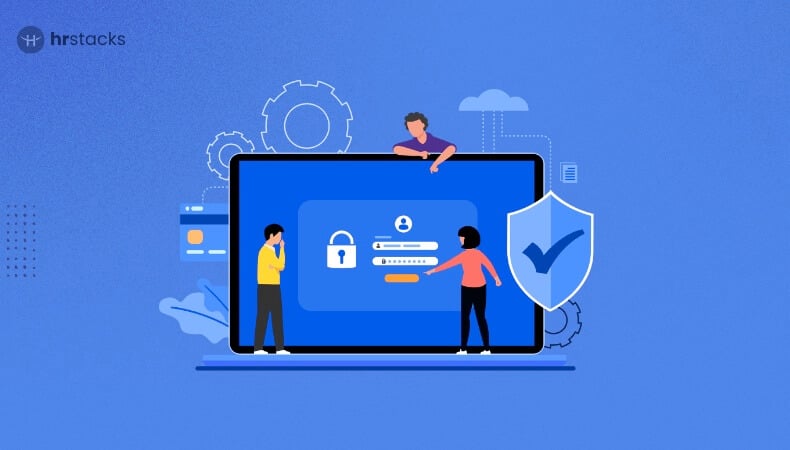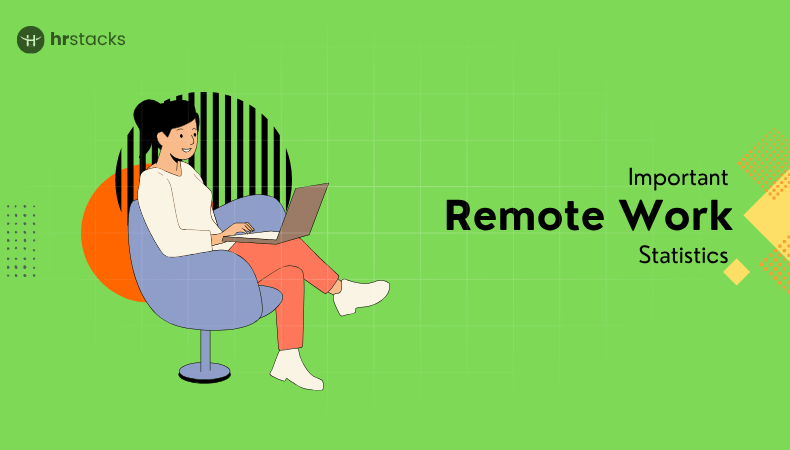People analytics equips HR teams to turn employee data into meaningful insights, whether that’s spotting trends in engagement, uncovering retention drivers, or measuring diversity progress.
It’s a powerful way to inform decisions and foster a more effective, inclusive workplace. But this power comes with a responsibility: employees’ personal information, such as performance records, health data, and demographic details, is highly sensitive.
A misstep in handling it can damage trust, invite legal penalties, and harm reputation. That risk is real: incidents like unsecured internal documents from companies such as Scale AI have put contractor and employee data at risk.
To avoid those pitfalls, organizations must understand the security and privacy hazards inherent in people analytics.
This article explores those challenges from governance and access control to anonymization, encryption, compliance, incident response, and ethical use of AI and provides a clear roadmap to help professionals navigate data responsibly and build employee trust.
Key Takeaways
- People analytics offers powerful insights, but mishandling employee data can lead to breaches, legal penalties, and loss of trust.
- Strong governance, access control, and encryption are essential to secure sensitive employee information.
- Anonymization alone isn’t enough, re-identification risks demand advanced privacy techniques like differential privacy and k-anonymity.
- AI and third-party tools add new layers of risk, requiring bias audits, explainable algorithms, and strict vendor assessments.
- Building a culture of privacy and cross-functional collaboration is just as important as technology, security must be built in, not bolted on.
Data Governance & Access Control
People analytics platforms pull together sensitive employee data, such as demographics, performance evaluations, compensation records, and engagement scores. Without a proper governance framework, this data may be misclassified or accessed by the wrong people.
To mitigate these risks, organizations should implement a data classification framework, labeling information as public, internal, confidential, or regulated. Automating this with data cataloging tools helps ensure consistency.
Role-based access control (RBAC) is essential, following the principle of least privilege—only authorized personnel should have access based on their role. Conducting regular access audits, ideally every quarter, helps ensure permissions remain current and appropriate.
Finally, it’s wise to adopt a data-centric security approach that protects the data itself through methods like dynamic masking and digital rights management, rather than relying solely on network boundaries.
Insider Threats & Human Error
Most data breaches today are caused not by hackers, but by internal mistakes or malicious insiders. Misconfigured systems, negligence, or deliberate misuse all pose serious threats. A recent case from Scale AI, for example, revealed how unsecured internal Google Docs exposed personal data of thousands of contractors, highlighting how easily things can go wrong.
To combat this, organizations should run regular security awareness training that goes beyond basic checklists, using phishing simulations and gamified content can increase engagement and improve outcomes.
Behavioral monitoring systems can flag suspicious activity, such as mass data exports or access during unusual hours. Coupled with comprehensive audit logs and real-time alerts for privileged actions, these steps help create a more secure environment.
Encouraging a culture of vigilance, where employees feel empowered and rewarded for flagging potential issues, adds another vital layer of protection.
Privacy vs. Utility: Anonymization & Re-Identification
Even anonymized datasets may be vulnerable. Aggregated records can be re-identified using inference attacks, compromising privacy.
Examples:
- Census data re-identification through cross-dataset triangulation.
- Cambridge Analytica was harvesting Facebook profiles without consent.
Solutions:
- Differential Privacy & Noise Injection: Add controlled randomness to aggregated results .
- k-Anonymity & l-Diversity: Ensure no group or combination of attributes can identify a unique individual.
- Privacy Impact Assessments (PIA): Conduct before beginning any new people analytics project.
- Aggregate Over Individuals: Report only at team- or department-level whenever feasible.
Secure Infrastructure & Monitoring
People analytics collects data from multiple sources—HRIS, payroll, performance platforms, SaaS tools—often moving across networks and systems. If not secured properly, these data flows are vulnerable to breaches, unauthorized access, and compliance failures.
Risks:
- Man-in-the-middle attacks via unencrypted sessions.
- Data leaks through misconfigured APIs or insecure storage.
- Shadow IT pipelines operating outside official oversight.
- Delayed incident detection leading to greater exposure.
Solutions:
- Strong Encryption: Apply TLS for data in transit and AES-256 for data at rest to prevent interception and theft.
- Zero-Trust Security: Authenticate and authorize every access attempt—regardless of device or location. Use granular identity and access controls.
- Secure APIs: Protect endpoints with OAuth2, rate limiting, and logging. Regularly test integrations.
- Shadow IT Discovery: Use monitoring tools to identify and govern unsanctioned apps or data flows.
- Continuous Monitoring: Deploy SIEMs (e.g., Splunk) and UEBA tools to detect anomalies across systems, users, and APIs.
- Audit Logging & Alerts: Maintain detailed logs and enable real-time alerts for high-risk activities like data exports or privilege escalations.
- Incident Response Playbooks: Prepare standardized IR workflows—from detection to communication and recovery. Run tabletop drills regularly.
- Encrypted Backups: Ensure backups are isolated and protected to support quick, secure recovery after incidents.
- Transparency & Breach Notification: Inform affected employees and stakeholders promptly in the event of a breach to maintain trust and meet legal obligations.
Regulatory & Jurisdictional Compliance
People analytics often spans global operations, and each locale has differing privacy and labor laws: GDPR in Europe, CCPA/CPRA in California, HIPAA for health data, and PIPEDA in Canada.
Risks:
- Non-compliance results in steep fines (up to €20M or 4% of revenue under GDPR).
- Cross-border data transfers may require EU–US frameworks like the EU–US Data Privacy Framework.
- Employees have legal rights to access or delete their data under laws like CPRA and GDPR.
Solutions:
- Privacy Management Platforms: Automate consent management, data mapping, and subject‑access request workflows.
- Localized Policies & Data Residency: Maintain separate data stores for different regions.
- Regular Compliance Audits: Engage third parties to assess alignment with global laws.
- Privacy by Design: Embed privacy considerations into system architectures from day one, supported by CPO leadership.
AI & Algorithmic Risk
People analytics is increasingly powered by AI, but poorly governed models can introduce bias, lack transparency, or even be manipulated. For instance, performance-based algorithms may inadvertently reinforce existing biases, and “black box” decisions can undermine employee trust.
To mitigate these risks, companies should develop governed AI pipelines with separate training and production environments, complete with audit logs.
Conducting bias audits regularly, using fairness assessment tools, helps identify and correct algorithmic discrimination. Deploying explainable AI (XAI) ensures employees and decision-makers understand how conclusions are reached and allows for human review.
Transparency should also be embedded into the governance process, such as tagging outputs with metadata and offering employees insight into where and how AI is used in the organization.
Emerging Security Technologies
Static defenses can’t keep pace with today’s dynamic threats. Organizations must adopt adaptive security, leveraging AI‑driven detection, zero‑trust models, quantum‑resistant cryptography, and real‑time automation to continuously evolve protection.
Innovations to Consider:
- AI‑Driven Threat Detection: ML models that detect anomalies in real time.
- Homomorphic Encryption: Enables computation on encrypted data, ideal for privacy-preserving analytics.
- Blockchain-based Audit Trails: Immutable logs for tamper-proof history.
- Zero‑Trust Security: Micro‑segmentation across systems and users.
- Edge Security: Protecting data at its point of capture (e.g., employee wearables).
Vendor & Third‑Party Risk
Vendor and third-party integrations, like those from KanboApp, 3C B A LC, and Culturate.ai, can expose people analytics platforms if these providers lack rigorous security controls, encryption, certifications, or ongoing risk assessments.
Solutions:
- Third‑Party Risk Assessments: Review vendors’ certifications (SOC 2, ISO 27001) and conduct security audits.
- Contractual Security Clauses: Include data processing agreements, breach notification, and audit rights.
- Ongoing Vendor Monitoring: Regular reassessment for alignment with evolving standards.
Organizational Culture & Skill Gaps
Legacy HR teams often juggle siloed responsibilities while lacking data security expertise. Without a unified security culture or cross-functional collaboration between HR, IT, and legal, critical vulnerabilities linger.
Solutions:
- Cross-Functional Teams: Include privacy, security, HR, and legal colleagues in people analytics governance.
- Upskilling Programs: Train HR in privacy/analytics, IT in HR‑specific threats.
- Executive Sponsorship: Secure board support to finance security programs and cultural change.
- Transparency with Employees: Communicate data usage purposes and protections to build trust.
Next Steps & Resources
To turn these principles into practice, use a data-mapping tool like OneTrust or TrustArc to inventory your people data and identify security gaps.
Pair this with a clear roadmap framework, defining objectives, required tools, timelines to guide implementation, and track progress.
| Action Item | Tools & Frameworks |
| Conduct Data Mapping | Privacy Impact Assessment Tools (OneTrust, TrustArc) |
| Implement RBAC & Encryption | IAM tools (Okta), Encryption (AWS KMS, Azure Key Vault) |
| Deploy Monitoring & AI Detection | SIEM (Splunk), UEBA (Exabeam), ML tools |
| Vendor Security Assessment | SOC 2, ISO 27001 audits |
| Launch Training Programs | SIM‑based phishing + gamified modules |
| Pilot for Transparency | Develop inverse transparency features—show employees their data usage |
Conclusion
People analytics can revolutionize organizational effectiveness if done right. But data security and privacy aren’t optional extras. Embedding ethical design, strong governance, encryption, and transparent practices into every step ensures analytics truly serves both the business and its employees.
Leaders must foster cross-functional collaboration, invest in training, and hold vendors accountable, ensuring security is built in, not bolted on.
With privacy by design and a shared culture of trust, organizations can harness insights responsibly and avoid costly breaches, compliance issues, or erosion of trust.
When data ethics and security are core to your strategy, people analytics becomes more than just a competitive advantage; it becomes a sustainable, trusted resource that empowers both organizations and the people within them.









